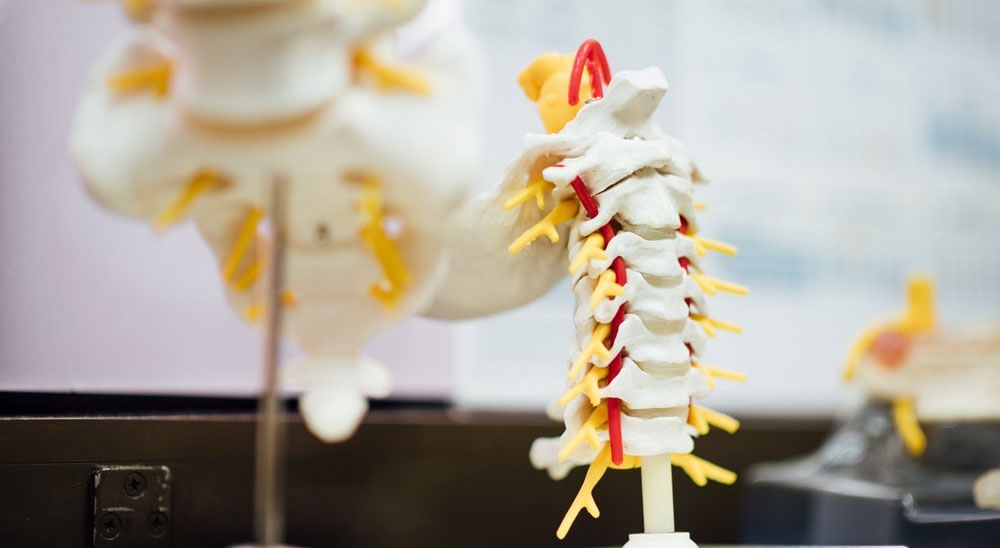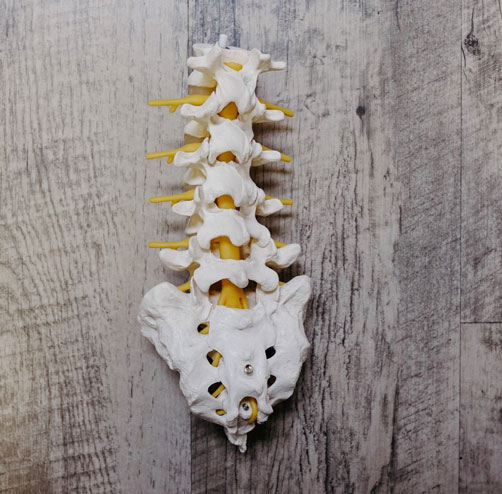WHAT IS DISCECTOMY?
Driving on the roads in a hectic lifestyle and sitting in one posture for a long time due to the increasing trend of gadgets is having a bad effect on the health of the spine. The ill effects of modern lifestyle are that 3 out of every 5 people are facing some health related problem.
In today’s time, young or old, most of the people are seen suffering from this spine disorder. In such a situation, back pain has also become a common problem, but it is not right at all to be careless about back pain.
If you have chronic back pain for more than 3 weeks, it calls for medical attention. Neglecting back pain can take a toll on your physical health and affect mobility. So consult your spine specialist today to know more about back pain to guide you to the best effective treatment.
Operation is such a thing, hearing the name of which causes a lot of anxiety, stress and apprehension especially when it comes to back surgery. This is also a matter of risk. But, nevertheless you should take appropriate measures to know the best treatment for your back.
Take guidance from your spine specialist who will guide you about the surgical treatment for back pain.
Discectomy is one such surgical procedure that gives you relief from pain by removing the affected disc. Let’s look at the types and indications of discectomy

TYPES OF DISCECTOMY
There are three types of methods of this operation.
- Traditional Method
The first method is the traditional operation, in which an incision is made in the area of the waist or the back of the neck and the disc is cut and removed. The process of removing the disc by cutting it out is called discectomy.
In this procedure, the patient is given spinal anesthesia.
A numbing needle is inserted into the patient’s spinal nerve and the operation is performed. - Micro Surgery Discectomy
Discectomy operation led to a more advanced operation, which is named as micro surgery. In this operation,everything is the same as in conventional operation. In both these operations, there is a risk of a subtle nerve being affected due to the effect of the anesthetic around the affected part. - Transforaminal Endoscopic Discectomy
The third type of operation is Transforaminal Endoscopic Discectomy(Stitchless). In this method, the surgeon removes the affected disc or part of it with the endoscope through an incision such as a keyhole. During this procedure the patient remains fully conscious. If there is a slight discomfort in any of the subtle nerves during the operation, then the patient becomes aware of it and the surgeon takes care of it. The special thing about this operation is that the patient can go home one hour after the operation. This operation is done under local anesthesia. These three operations have different importance at their respective places.
PROCEDURE OF DISCECTOMY
- Discectomy surgery is performed to remove herniated or degenerative discs from the lower part of the spine.
- In this, with the help of back muscles, an incision is made to remove the disc which is pressing on the nerve.
- Discectomy may be recommended if physical therapy or medication is unsuccessful in relieving leg or back pain, as well as if you suspect nerve damage, weakness, or pain in your legs.
- There are several ways to perform a discectomy.
- Many surgeons now prefer minimally invasive discectomy, which uses small incisions and a small video camera to view the procedure.

SYMPTOMS OF LUMBAR DISCECTOMY
- When you feel difficulty in standing.
- Difficulty in walking for a while.
- Extreme difficulty in sitting and bending.
- The feeling of weakness, or numbness in the legs.
- Leg pain is worse than back pain.
- No relief from physical therapy or medicine.
- Feeling the loss of sensation in your genetic area.
- Loss in the bladder and bowel movement.
PREOPERATIVE CARE BEFORE DISCECTOMY
A few days before the surgery, you have to undergo a pre-surgical test. In this presurgical test, you go to the doctor and many types of your tests are done.
The doctor takes your detailed case consultation in the form of your past medical history, and also tries to get information about whether you have had any kind of allergies, infections, anesthesia reactions, or any previous surgeries. If you are on any medication, then you have to stop it from the day of surgery.
On the day of the Discectomy surgery, the following things should be followed:-
- The bath should be done with antibacterial soap.
- Wear clean loose-fitting clothes.
- Wear flat-heeled shoes that close at the back.
- If you must take regular medication the morning of surgery, do so with small sips of water.
- Makeup, hairpin, contacts, body piercing, nail polish, etc. should be removed.
- Leave all valuables and jewelry (including wedding bands) at home.
- Pain control is possible with yoga, watch the video, expert opinion
PROCESS OF DISCECTOMY
- First of all, by examining your spine, it is ascertained whether you really need surgery.
- Many checkups are done in which MRI is mainly done to know clearly the aspect of the spine. An MRI examines this entire area of your spine thoroughly.
- According to doctors, when it is necessary to do this surgery, only then do they advise you because it is also risky.
- A discectomy is performed to relieve a herniated disc (also called a slipped or disc prolapse) on the nerves of the spinal cord.
- A discectomy can be performed anywhere along the spine, from the neck (cervical) to the low back (lumbar).
- The surgeon accesses the damaged disc from the muscles and bone, at the back of the spine. The surgeon accesses the disc by removing a portion of the lamina.
- The lamina is the bone that forms at the back of the spine and forms an upper layer on the spinal cord.
- A variety of surgical tools and techniques can be used to perform a discectomy.
Experts like Neurosurgeons perform surgery
This surgery is performed by a neurosurgeon or an orthopedic surgeon. Some spine surgeons have received specialized training in spine surgery to minimize the risk of performing this surgery.
So be sure to ask your surgeon about their training, especially if your case is serious, so don’t hesitate to seek information.
SURGICAL DISCECTOMY
Most herniated discs heal after a few months of continuous treatment. Your doctor can also give you treatment options, but it is only you who can decide whether surgery is right for you. It is extremely important to consider all the risks and benefits before making your decision.
Only 10% of people with herniated disc problems are given 6 weeks of treatment to consider surgery. If there is an improvement with treatment, surgery is postponed. Surgery is recommended if there is a problem even after treatment.
With a minimally invasive incision, there is less dissolution of the back muscles and may shorten the recovery time. Your surgeon will recommend the most appropriate technique for your specific case.
RISKS
This is a major surgery in which you need to be more aware, there are some risks in it which are like the following –
- Bleeding
- Problems in the lungs
- Infection
- Locking spinal fluid
- Injury blood vessel
RECOVERY AFTER DISCECTOMY SURGERY
After surgery, you are taken to a recovery room where a team looks after the surgery and complications from the anesthesia. You may be well enough to go home the same day you had surgery, although a hospital stay may be required.
Whether you can go to your job or not depends on whether your job is based on the amount of heavy lifting, walking, and sitting, then you need to rest more.
If you or anyone you know is suffering from spine pain, neck and back pain, call us today at (469) 545-9983.
